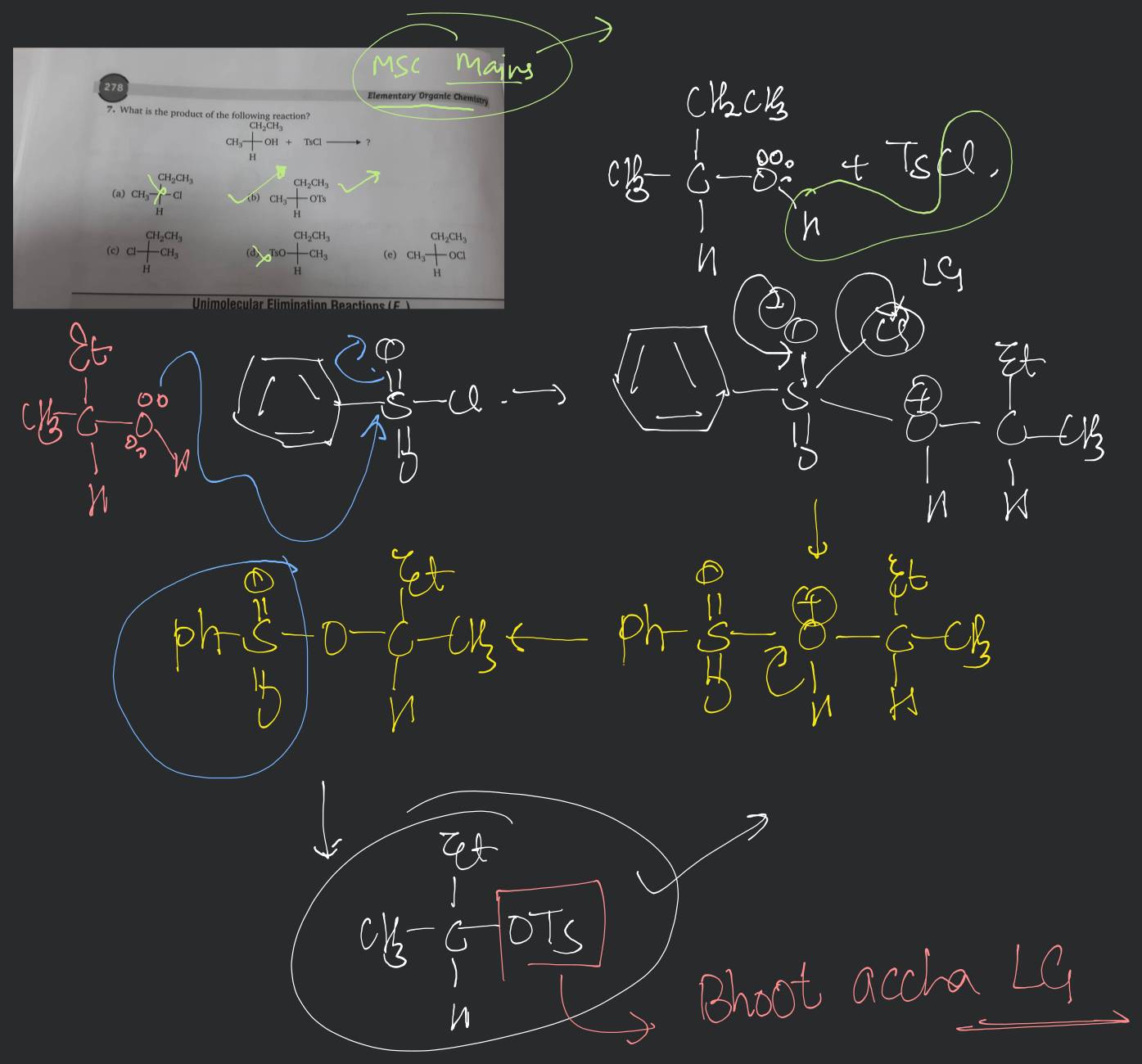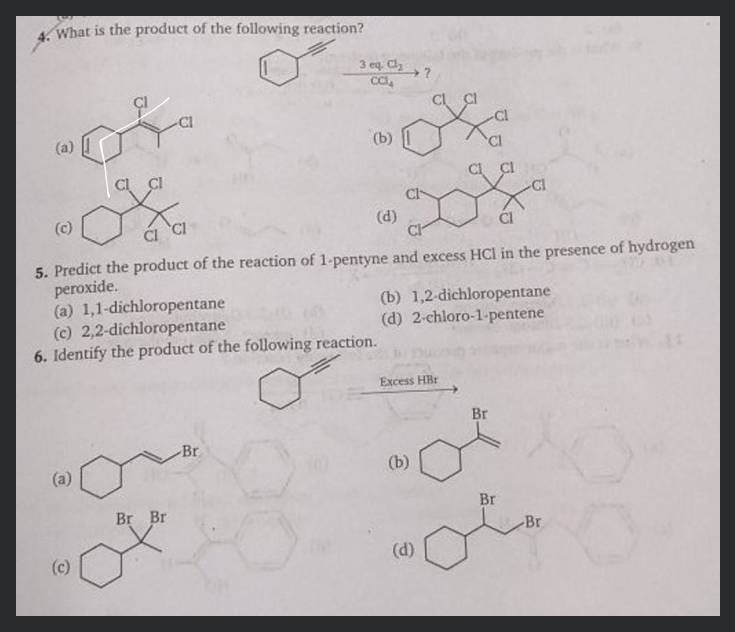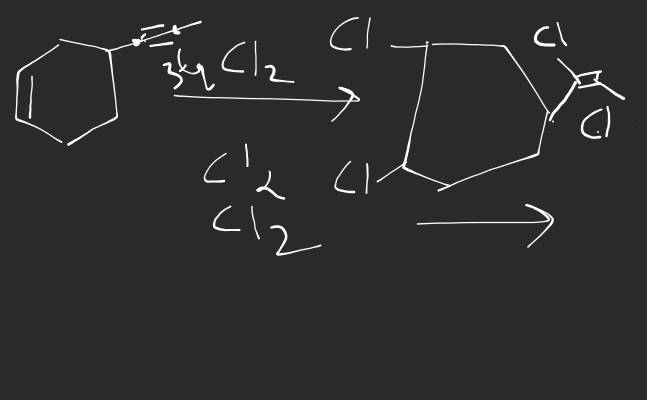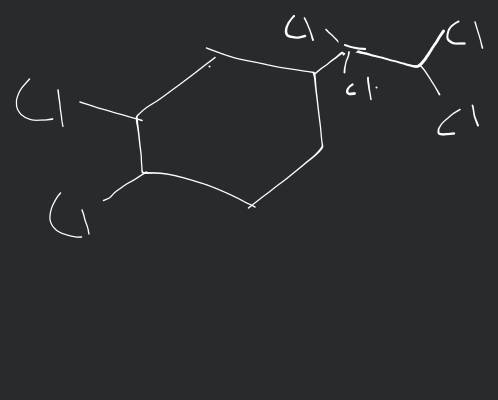Question
Question asked by Filo student

What is the product of the following reaction?
- ::
- Both (a) and (b)
- Neither (a) nor (b)
Found 3 tutors discussing this question
Discuss this question LIVE
6 mins ago
Filo tutor solutions (10)
Learn from their 1-to-1 discussion with Filo tutors.
4 mins
Uploaded on: 4/24/2023
Was this solution helpful?
61
Share
Report
12 mins
Uploaded on: 1/26/2023
Was this solution helpful?
58
Share
Report

One destination to cover all your homework and assignment needs
Learn Practice Revision Succeed

Instant 1:1 help, 24x7
60, 000+ Expert tutors

Textbook solutions
Big idea maths, McGraw-Hill Education etc

Essay review
Get expert feedback on your essay

Schedule classes
High dosage tutoring from Dedicated 3 experts
Practice more questions on Alkyl Halide
Question 1
Easy
Views: 5,572
Question 2
Medium
Views: 5,395
Question 3
Easy
Views: 5,448
Question 4
Hard
Views: 5,753
Students who ask this question also asked
Question 3
Views: 5,573
Question 4
Views: 5,307


Stuck on the question or explanation?
Connect with our Chemistry tutors online and get step by step solution of this question.
231 students are taking LIVE classes
| Question Text | What is the product of the following reaction? |
| Updated On | Dec 13, 2023 |
| Topic | Alkyl Halide |
| Subject | Chemistry |
| Class | Class 12 |
| Answer Type | Video solution: 10 |
| Upvotes | 853 |
| Avg. Video Duration | 9 min |







